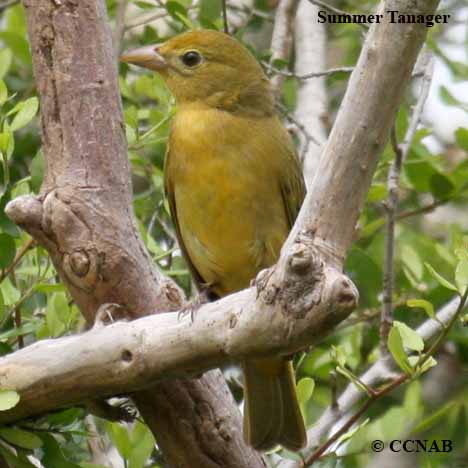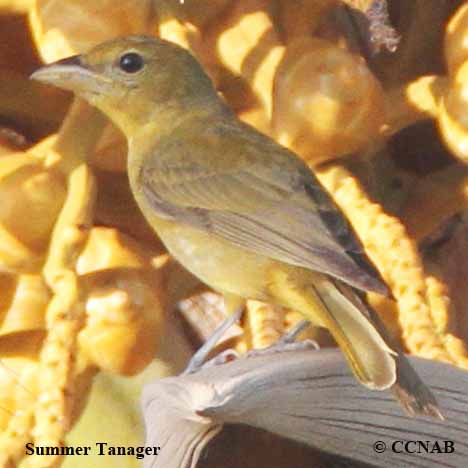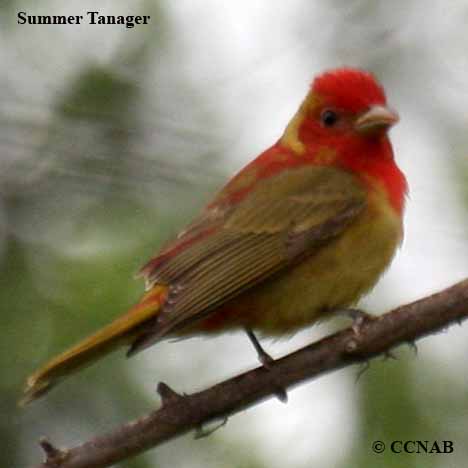North American Bird Search Box
This search box can be used to find bird species using bird's english, french or latin name, or to identify bird by its 4 letter Alpha Code
Field Guide for all the Birds of North America
Summer Tanager
4 Letter (english names) Alpha Code: SUTA (1)
Piranga vermillon
Piranga rubra
Information, images and range maps on over 1,000 birds of North America, including sub-species, vagrants, introduced birds and possibilities
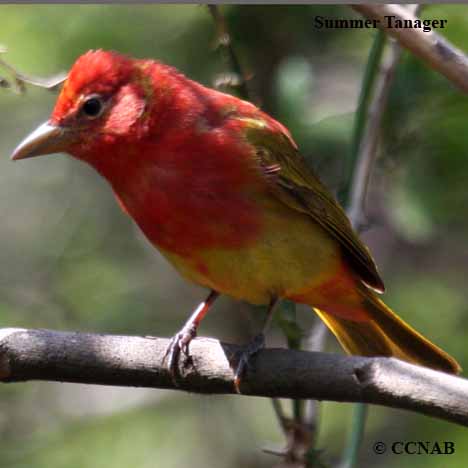
Species: The Summer Tanager (Piranga rubra) is seen across the southern regions of the USA. The beautiful male is recognized by its completely red body and is the only bird species in North America like this. Their diet, like most tanagers, consists of bees and other types of insects. They are sometimes seen at birdfeeders, attracted by fruit and/or fatty suet.
Distinctions: Sexually dimorphic, the male has a completely brilliant red body, retaining its red plumage throughout the year. The male tanager has a large yellow bill that is perfectly adapted for capturing and eating bees, wasps and hornets. The Summer Tanager has no crest and its brighter red plumage distinguishes it from the Northern Cardinal. The female has a light olive-coloured mantle, with a light coloured yellow breast. As in most cases, the juvenile is similar to the female's plumage in its first year.
Voice: Repeated three to seven notes lyrics, call consists of three notes that are easily recognizable, once seen and heard.
Nesting: Three to four blueish-green coloured eggs, with brown speckles, one brood per year. Builds its cup-shaped nest in deciduous trees or mixed forest.
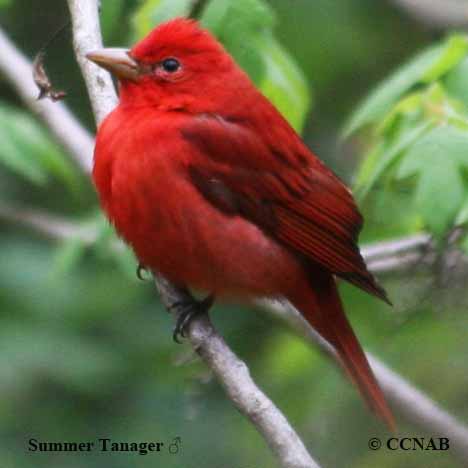
Life, Habitat & Pictures of North American Tanagers
| B L | W W | W | Family | Latin Name |
|---|---|---|---|---|
| 7.75" 19.7cm | 12" 30.5cm | 1oz 28.4g | Cardinalidae | Piranga rubra |
North American Bird Calls
- Click here
- Click here
- Summer
- Year Around
- Winter
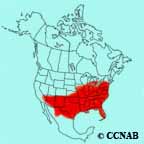
Distribution: These tanagers are found throughout wooded areas. They are consistently seen in small numbers, along the southern borders of central Canada, with the odd reports in the eastern provinces of Canada, west into the central USA states, and a narrow band reaching into California and east to the tip of Florida.
Reference to Other Bird Site:
ABA - American Birding Association This site represents an organization that maintains official records of all birds species that have been proven to have been seen inside the perimeters of the North American Continent and the surrounding bodies of water. Regular revised versions are posted to keep the bird list current at all times. This is the list used by all serious birders over their lifetime. You may be aware of the movie called the "Big Year". It was with this list that all the competing birders used in an attempt to set a new record as to how many bird species that could be seen by an individual birder in one calendar year.
